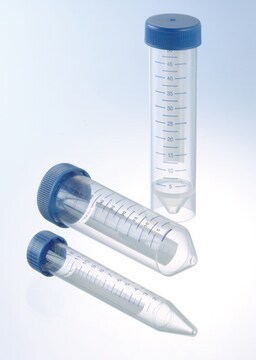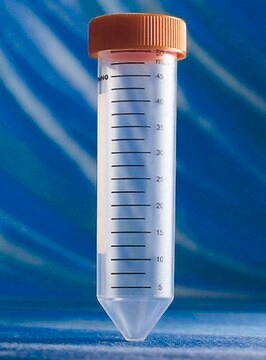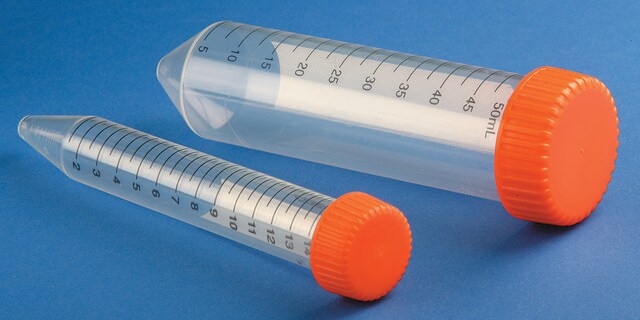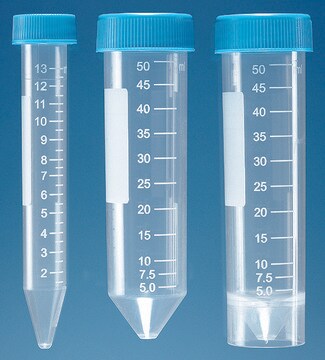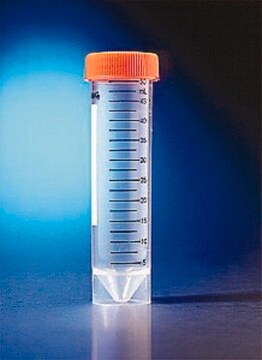T2318
Greiner centrifuge tubes
centrifuge tube, 50 mL, 30 x 115 mm, conical (V) bottom, w/ graduations, I.D. field
Synonym(s):
centrifuge tubes, culture tubes, plastic centrifuge tube, plastic culture tube, Greiner centrifuge tubes
About This Item
Recommended Products
material
cap
conical bottom tube
polypropylene tube
Agency
suitable for ASTM® 7968
suitable for ASTM® 7979
suitable for DIN 38407-42
suitable for EPA 1621
suitable for EPA 1633
suitable for EPA 8327
suitable for EPA ACB B21-02
suitable for EPA ACB B23-05b
suitable for GB 5009.253-2016
suitable for ISO/CEN 15968-2010
reg. compliance
suitable for FDA C-010.02
sterility
sterile
feature
RCF 3,200 × g
graduations, ID field
packaging
pack of 25
case of 500
manufacturer/tradename
Greiner 227261
capacity
50 mL
diam. × L
30 mm × 115 mm
color
blue cap
colorless tube
Looking for similar products? Visit Product Comparison Guide
Related Categories
General description
High quality, crystal-clear polypropylene centrifuge tubes. Centrifuge tubes can be safely centrifuged to approximately 3,200 × g (50 mL size) and 3,500 × g (15 mL size) depending on the specific gravity of the solution being centrifuged and the type of rotor.
Application
Legal Information
Choose from one of the most recent versions:
Certificates of Analysis (COA)
Don't see the Right Version?
If you require a particular version, you can look up a specific certificate by the Lot or Batch number.
Already Own This Product?
Find documentation for the products that you have recently purchased in the Document Library.
Customers Also Viewed
Our team of scientists has experience in all areas of research including Life Science, Material Science, Chemical Synthesis, Chromatography, Analytical and many others.
Contact Technical Service